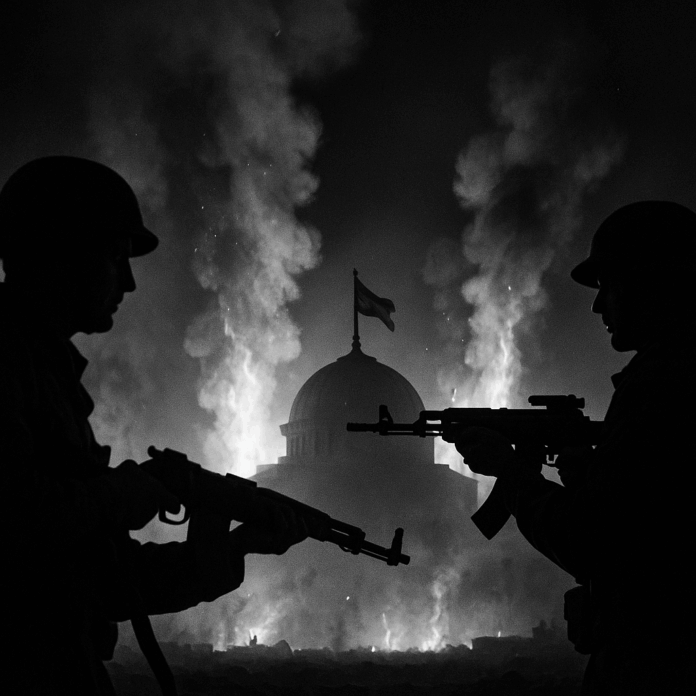The Israel–Iran ceasefire, announced overnight by Donald Trump with the flair of a Hollywood peacemaker, smells more like theatre than diplomacy. As a journalist with two decades of experience following Middle Eastern upheavals, allow me to express deep skepticism, not about the announcement itself, but about its truthfulness, its longevity, and, most crucially, the actual intent behind it.
Trump, the Messenger of a… Fictional Peace?
This morning, Anglo-American news channels played Trump’s triumphant words on repeat: a “complete and total ceasefire” between Israel and Iran. Trump congratulates himself. He even thanks Tehran for allegedly “warning” Washington ahead of a retaliatory strike on a U.S. base in Qatar. A 12-day war, wrapped up in a post and a few well-crafted sentences. Frankly? It’s hardly believable.
Because it is not in the DNA of the Iranian regime to sign a ceasefire when its honor has not been avenged in blood. After seeing its nuclear infrastructure bombed, its commanders killed, and its national pride humiliated, it is unthinkable for Iran to exit this conflict without a proportionate response.
Iranian Revenge… Postponed?
Military reality on the ground contradicts the diplomatic fairytale. Just last night, sirens wailed across southern Israel. Be’er Sheva was struck. Casualties were reported. Israel retaliated. So where exactly is this supposed ceasefire? Where is this so-called “peace”?
Iran never confirmed the agreement. The only statement from Foreign Minister Abbas Araghchi says it all: “No ‘agreement’ on any ceasefire…” The conditional tone used by American sources is revealing: if Israel stops, then Iran might stop. That’s not a mutual commitment, much less a binding treaty.
Frozen Skies: An Ominous Signal Ignored
Between 8 and 11 p.m. GMT last night, the airspaces of Qatar, the UAE, Bahrain, Kuwait, and parts of Saudi Arabia were entirely shut down. No official statements were issued, but the regional coordination was unmistakable. Air radar platforms showed a complete void over the Gulf, as if frozen by an imminent threat.
And this morning, although some of those zones have reopened to civilian air traffic, let me be clear: these signals are far from trivial. You don’t shut down the skies over multiple Gulf monarchies for a false alarm. And if they’ve reopened, it’s likely out of economic necessity, not because the threat has passed.
In my view, and I say this deliberately, those closures may return within hours. Because nothing that occurred overnight suggests that this war is truly over. The conflict may be sleeping, yes… but it sleeps with one eye open.
A War Disguised as Peace
This ceasefire looks like an American deal. It was Washington who announced it. Washington who glorified it. Washington, again, who staged it. Yet it’s Tehran that has suffered the humiliation. In truth, this “peace” feels more like a tactical pause imposed by international pressure than a sincere desire to end hostilities.
The protesters in Tehran weren’t chanting “Peace now,” but “Revenge.” The regime, too, needs to save face. A ceasefire without retribution is a surrender. And I strongly doubt the Islamic Republic is prepared to wear that image.
Conclusion: Don’t Trust Mirages, Especially in the Desert
What we’re facing here is a makeshift ceasefire, heavily publicized, but not solidified. In our journalistic jargon, we call this a tactical ceasefire. It’s not peace; it’s a constrained suspension of fire. Fragile, shaky, and rootless.
Markets are rising. Oil prices are falling. But meanwhile, military radars remain fully active. The missiles? Still armed.
The war may be momentarily silent. But it’s far from over.



